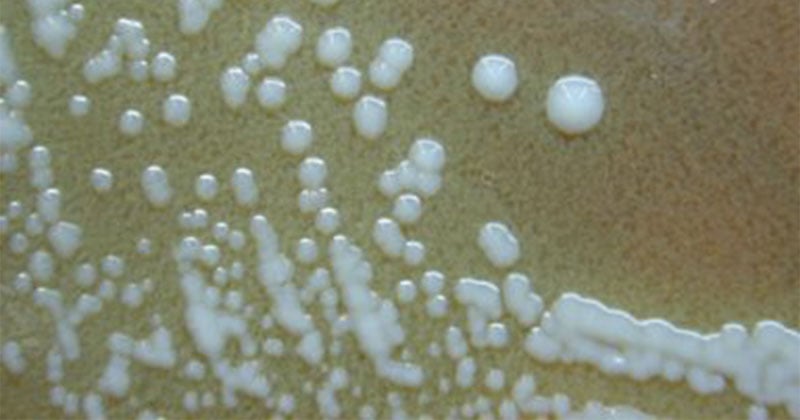Cystine Glucose Blood Agar is known as Cystine Heart Agar. Francis developed blood-dextrose-cystine agar after determining F. tularensis would only grow on an artificial medium supplemented with sulfhydryl compounds (i.e., cystine). F. tularensis is a fastidious organism and requires cysteine for best growth. To recognize the lifetime achievements of Francis in understanding the disease, the name of the organism was changed to Francisella tularensis. The medium-enriched with hemoglobin is recommended for the cultivation of Francisella tularensis and without enrichment supply, it supports excellent growth of gram-negative cocci and other pathogenic organisms.
Interesting Science Videos
Composition of Cystine Glucose Blood Agar
| Ingredients | Gms/L |
| Infusion from Beef heart | 500.0 |
| Proteose peptone | 10.0 |
| Dextrose | 10.0 |
| Sodium chloride | 5.0 |
| L-Cystine | 1.0 |
| Agar | 15.0 |
Final pH (at 25°C) 6.8±0.2
Principle of Cystine Glucose Blood Agar
This medium is a nutritionally rich medium and the most suitable medium for isolating F. tularensis, which may also be used for cultivating many other organisms generally difficult to grow. The medium contains infusions from beef heart, proteose peptone supplies nitrogen and vitamins and L-Cystine is the source of amino acids. Dextrose serves as a carbon energy source. Sodium chloride provides the essential ions and maintains the osmotic balance. Agar is the solidifying agent. Enrichment with 2% hemoglobin provides additional nutrients and growth factors. Without enrichment, Cystine Glucose Blood Agar supports excellent growth of gram-negative cocci and other pathogenic microorganisms.
Preparation of Cystine Glucose Blood Agar
- Suspend 51 grams in 1000 ml distilled water.
- Heat to boiling to dissolve the medium completely.
- Sterilize by autoclaving at 15 lbs pressure (121°C) for 15 minutes.
- For enrichment with hemoglobin (2%), suspend 10.2 grams of the medium in 100 ml distilled water.
- Sterilize by autoclaving at 15 lbs pressure (121°C) for 15 minutes.
- Cool medium to 50°C and aseptically add 100 ml of 2% sterile hemoglobin solution.
- Mix well and pour into sterile Petri plates.
Results Interpretation on Cystine Glucose Blood Agar
- At 24 hours colonies are very small to be observed.
- At 48 hours, F. tularensis colonies appear 1-2mm in diameter, white to grey to bluish-grey, opaque, flat, with an entire edge, smooth and have a shiny surface.

Figure: F. tularensis on Cysteine heart agar with blood (CHAB) – Colonies are 2 to 4 mm, smooth, entire, greenish-white, and butyrous with opalescent sheen at 48 to 72 hours. Source: © 2012 South Dakota Department of Health.
Uses of Cystine Glucose Blood Agar
- It is used in qualitative procedures for the cultivation of Francisella tularensis.
- Without enrichment supply, Heart Infusion Agar with 1% dextrose and 0.1% cystine supports the growth of gram-negative cocci and other pathogenic microorganisms.
Limitations
- It is recommended that biochemical, immunological, molecular, or mass spectrometry testing be performed on colonies from pure culture for complete identification.
- F. tularensis is highly virulent and laboratory infections can be acquired through aerosols or droplets, hence clinical specimens must be handled with extreme caution and suspected specimens of containing F. tularensis should be handled following Biological Safety Level-2 (BSL-2) procedures. BSL-3 conditions are recommended for all culture manipulations as soon as F. tularensis is suspected.
References
- Ronald M. Atlas and James W. Snyder (2014). Handbook of media for clinical and public health microbiology. CRC Press. Taylor & Francis Group, LLC. Page no: 158
- Campbell CC (1945). Use of Francis’ Glucose Cystine Blood Agar in the Isolation and Cultivation of Sporotrichum schenckii. Journal of Bacteriology 50(2):233.
- Himedia
- Thermofisher
- https://www.bd.com/europe/regulatory/Assets/IFU/Difco_BBL/211874.pdf
